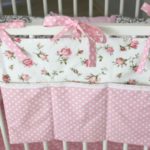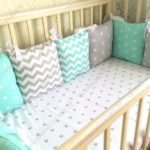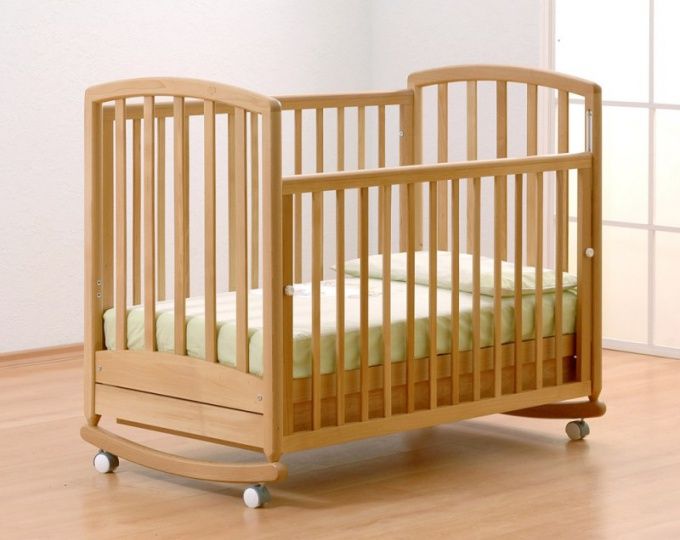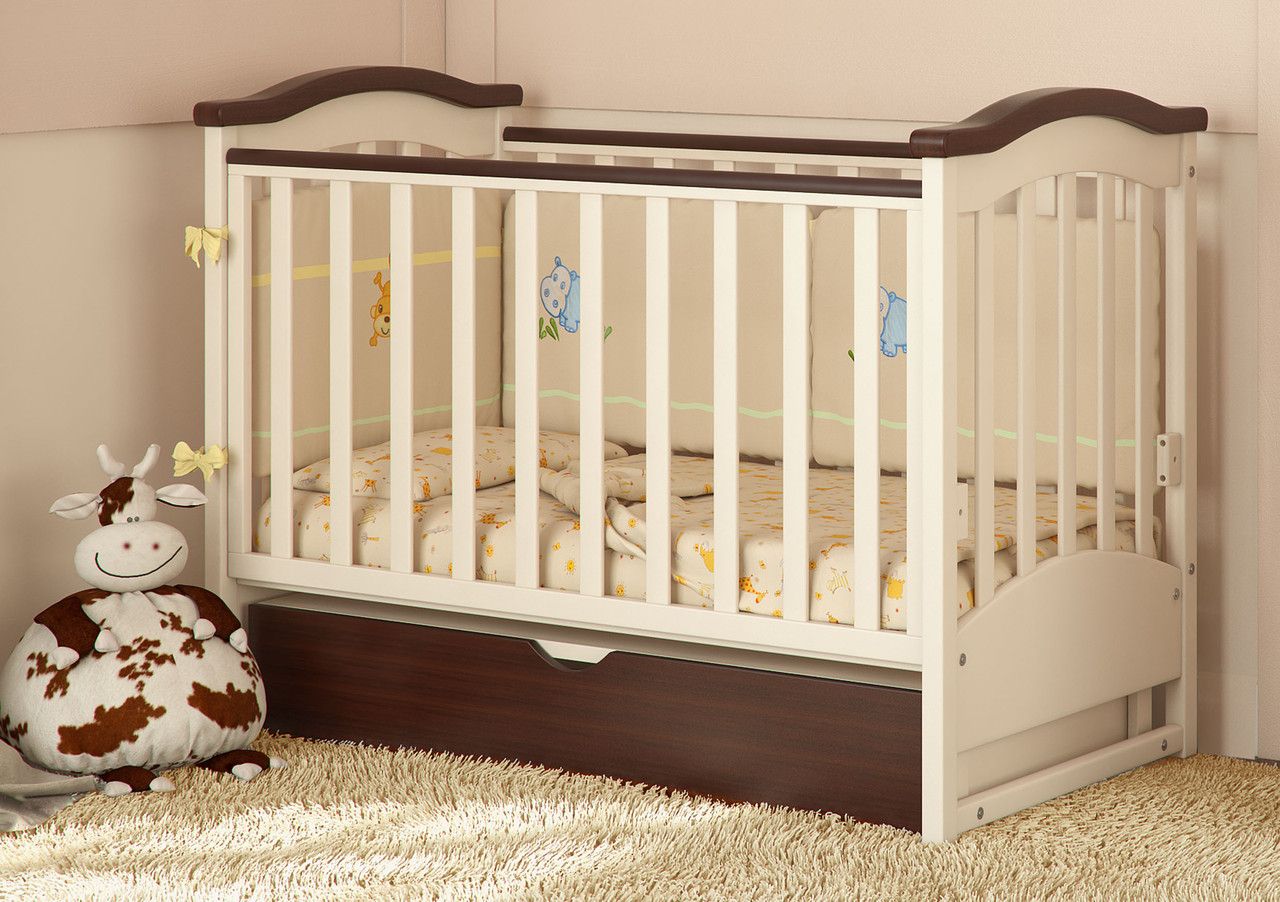How to sew a bolster for a crib
The advantage of sides in the form of rollers is that in this case the baby’s view is not limited from the outside world, he can easily observe what is happening around him. Also, during hot periods, this type of sides allows for unhindered air circulation.
The content of the article
Preparing materials and tools for sewing a bolster in a crib
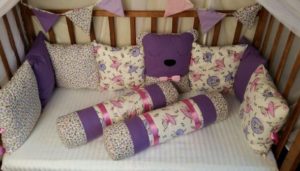 How to sew a bolster for a crib? All markings for cutting can be made directly on the fabric; in this case, a pattern is not needed. The side will differ from a regular decorative cushion pillow in the presence of ties for attaching to the crib.
How to sew a bolster for a crib? All markings for cutting can be made directly on the fabric; in this case, a pattern is not needed. The side will differ from a regular decorative cushion pillow in the presence of ties for attaching to the crib.
Important! Before sewing, you need to decide on the type of product. This will be a single-layer version with filling or a two-layer version with a cover. The latter is much more convenient because it can be easily removed and washed.
Let's look at an example of a two-layer product; after all, it is the most practical.
For sewing you will need:
- Plain cotton fabric for the roller itself;
- Colored fabric with a pattern for the cover;
- Filling – padding polyester or holofiber;
- Threads to match;
- Any round object of suitable diameter.
- Scissors;
- Pins;
- Ruler and chalk for marking.
Work process
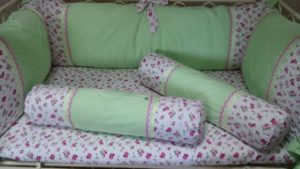 When sewing, you need to start from the bottom of the roller. You can find a lid or plate of a suitable diameter and transfer it to a plain fabric. Make two identical circles.
When sewing, you need to start from the bottom of the roller. You can find a lid or plate of a suitable diameter and transfer it to a plain fabric. Make two identical circles.
After this, you need to measure the circumference of the future bottom; this will be the width of the roller. To find out the length of the future cushion, you should determine the perimeter of the crib and divide it by the estimated number of pillows. When the width and length are known, you can draw a rectangle with 1 cm allowances on all sides.
A similar rectangle needs to be prepared for colored fabric. For the cover you will need strips of 30*4 cm. But circles for the cover will not be needed.
Important! The number of ties depends on the length of the roller. If it is small, then you need 3 ties - 1 in the middle and 2 along the edges. If it is long, then you need to sew 2 ties in the middle, that is, you will need 4 in total.
When all the parts are cut out, we start sewing from the base. Rectangles of plain fabric are sewn lengthwise. From the inside out we sew the first bottom to one of the holes.
We do the same with the second bottom, but we don’t need to sew 6-10 cm. After that, we need to turn it right side out, stuff it with filling and sew it up with a blind stitch. The base is ready.
When sewing a cover, you should start with the ties. For a smaller cover, sew one tie in the center, and for a long one, sew 2 ties in the middle at the same distance. There is no need to sew to the edges as they can simply be tied afterwards.
The blank for the cover must be sewn so that the ties are on the front side. After this you need to fold the edges and stitch. Afterwards you can put it on the roller.
Expert advice
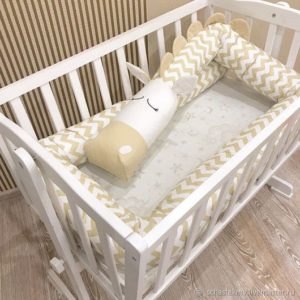 When sewing, keep the following in mind:
When sewing, keep the following in mind:
- Any bumpers must be safe first and foremost. The trim is sewn firmly. It is better to avoid beads and buttons, and the zipper should be securely hidden. Fabrics and fillers should not cause allergies.The criterion for choosing fabric is exactly the same as when sewing blankets for a crib - on a cotton basis and preferably softer, especially in the case of covers, do not forget about tactile sensations when in contact with the product.
- To make the cushion in the crib more plump, you can quilt the cover with the same synthetic padding polyester that is sold in rolls.
In any case, hand-made bumpers will please the child more than factory-made analogues. Kids always feel warmth and care!

